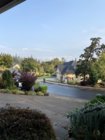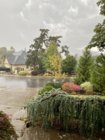I realize that global warming does not cause fires. It makes conditions more flavorable for fires to happen. The thing I was wondering about is if this is happening then why is it affecting almost only the western US and not other countries that have climates similar to the US.
A meteorologist might have an explanation for that.













